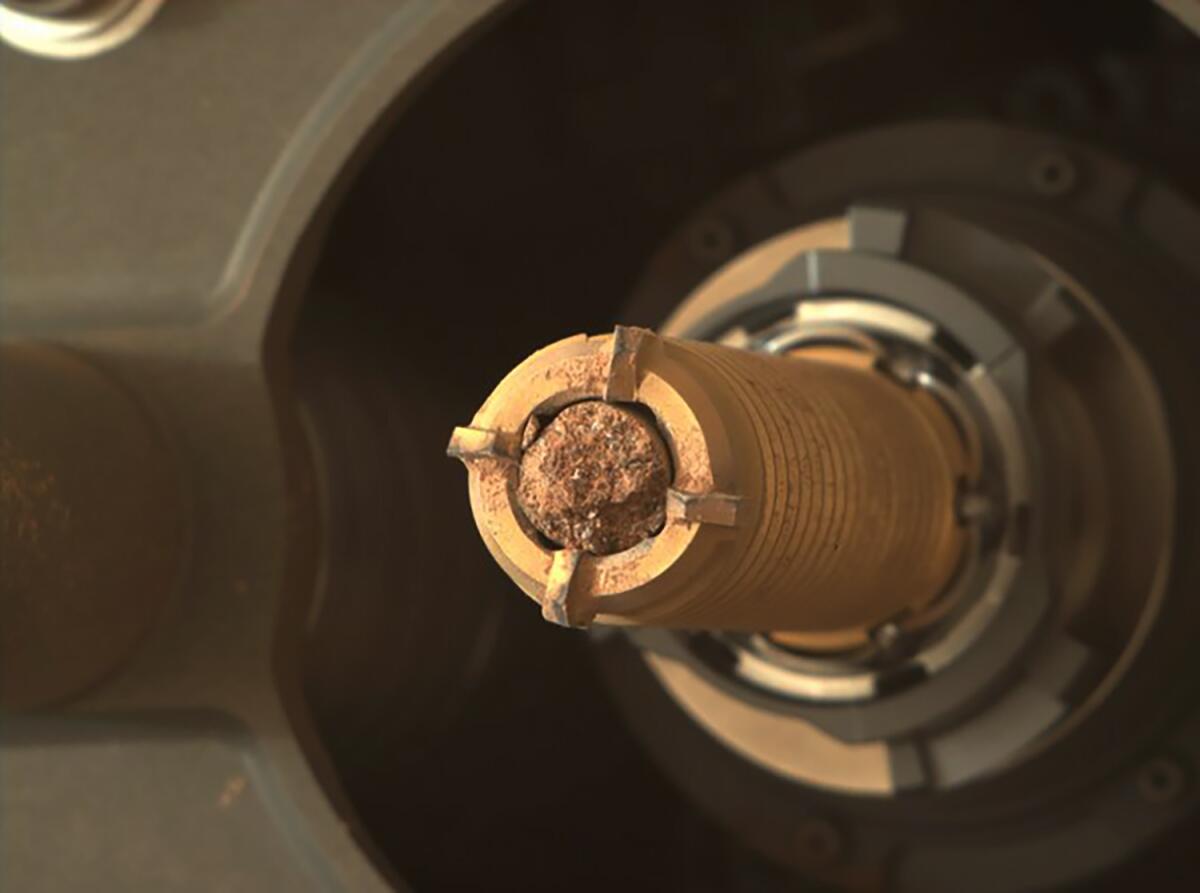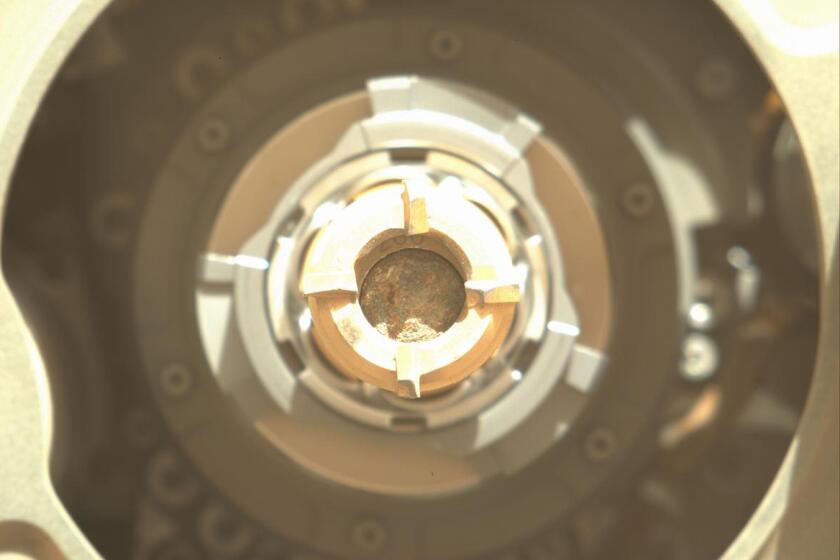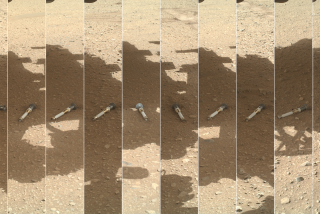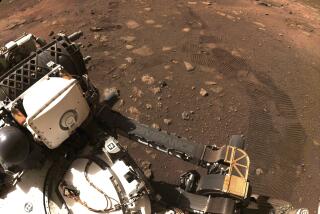NASA to launch 2 more choppers to Mars to help return rocks

- Share via
CAPE CANAVERAL, Fla. — NASA will launch two more mini helicopters to Mars in its effort to return Martian rocks and soil samples to Earth.
Under the plan announced this week, NASA’s Perseverance rover will do double duty and transport the cache to the rocket that will launch them off the red planet a decade from now.
Perseverance already has gathered 11 samples, with more rock drilling planned. The most recent sample, a sedimentary rock, holds the greatest promise of containing possible evidence of ancient Martian life, said Arizona State University’s Meenakshi Wadhwa, chief scientist for the retrieval effort.
There’s “a diversity of materials already in the bag, so to speak, and really excited about the potential for bringing these back,” she said.
NASA’s newest Mars rover has successfully collected its first rock sample for return to Earth. Last month’s attempt came up empty.
If Perseverance breaks down, the two helicopters being built and launched later this decade would load the samples onto the rocket instead.
The helicopters will be modeled after NASA’s successful Ingenuity, which has made 29 flights since arriving with Perseverance at Mars early last year. The chopper weighs just 4 pounds. The new versions would have wheels and grappling arms.
NASA officials said Perseverance’s impressive performance at Mars prompted them to ditch their plan to launch a separate fetch rover.
Jeff Gramling, director of NASA’s Mars sample return program, said the revised path forward is simpler. Each helicopter will be designed to lift one sample tube at a time, making multiple trips back and forth.
“We have confidence that we can count on Perseverance to bring the samples back, and we’ve added the helicopters as a backup means,” Gramling said.
NASA’s experimental Mars helicopter rises from the dusty red surface into the planet’s thin air, achieving the first powered flight on another planet.
NASA is collaborating with the European Space Agency on the retrieval mission. If all goes as planned, as many as 30 samples would blast off from Mars in 2031 and arrive at Earth in 2033. Lab analysis is needed to see whether any sample holds signs of microbial life that may have existed on Mars billions of years ago when water flowed on the planet.
As for the grounded ExoMars rover, it cannot be refashioned to help retrieve these samples, said David Parker, director of human and robotic exploration for ESA. It was returned to storage after Russia and Europe cut ties with the project because of the war in Ukraine. Russia was supposed to provide the rocket ride.
A decision on when the rover still can launch to Mars later this decade won’t come until late fall, Parker said.







